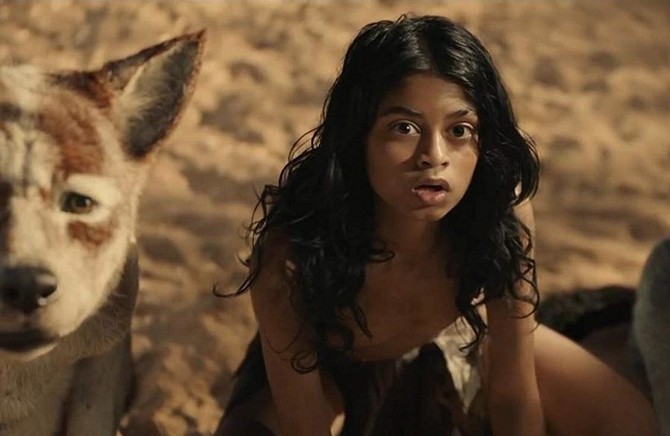The landscape of modern cinema is often defined by surprising shifts and strategic pivots. In a move that sent ripples through Hollywood, Netflix acquired the global rights to Andy Serkis’s ambitious and long-gestating film, Mowgli: Legend of the Jungle, from Warner Bros. This wasn’t merely a content acquisition; it was a complex and fascinating case study in problem-solving, a masterclass in what the software development world would call Software Debugging. The film, caught in a loop of production delays and facing a formidable market competitor, was essentially an application with a critical, production-level bug. Warner Bros. struggled to find a patch, but Netflix arrived with a complete refactoring of the deployment strategy.
This article delves into the story of the Mowgli acquisition through the unique lens of Debugging Techniques. We will analyze the film’s troubled journey as a “bug report,” explore Netflix’s solution as a “hotfix,” and examine the broader implications for the film industry as a shift in development architecture. By applying concepts from JavaScript Debugging to Production Debugging, we can gain a deeper understanding of this pivotal moment in streaming history and extract valuable lessons in strategic problem-solving that apply far beyond the world of code.
The Bug in the System: Mowgli’s Troubled Production Journey
Every complex project, whether a software application or a blockbuster film, is susceptible to bugs. For Mowgli, the issues weren’t in the code but in the context of its creation and planned release. The initial “bug report” stemmed from a series of environmental conflicts, performance bottlenecks, and unhandled exceptions that threatened to crash the entire project.
Identifying the Root Cause: The Disney Environment Conflict
The most significant issue facing Mowgli was a classic environment conflict. In 2016, Disney released Jon Favreau’s The Jungle Book, a visually stunning, critically acclaimed, and commercially massive success, grossing nearly a billion dollars worldwide. This created an incredibly hostile “production environment” for Serkis’s film. Warner Bros. was now tasked with marketing a second, similar-themed movie to an audience that had just been saturated by a universally beloved version. This is analogous to launching a new social media app right after a market leader has captured the entire user base. The Error Messages from market analysis were clear: audience confusion and franchise fatigue were almost guaranteed. The core value proposition was compromised before the product even shipped.
Analyzing the Stack Trace: Delays and Tonal Mismatches
To understand the failure, one must look at the “stack trace”—the sequence of events that led to the problem. Warner Bros. initially delayed the film’s release from 2016 to 2017, and then again to 2018, hoping to create distance from the Disney behemoth. However, these delays only compounded the issue, signaling a lack of confidence and creating negative buzz.
Furthermore, there was a fundamental mismatch in the application’s design. Serkis’s vision for Mowgli was a darker, grittier, and more faithful adaptation of Rudyard Kipling’s source material, targeting a more mature audience. Disney’s version was a family-friendly adventure. This tonal dissonance made marketing a nightmare. It was a product built for a niche user base but budgeted for a mass-market one. This is a common problem in Full Stack Debugging, where the frontend (marketing and user experience) is disconnected from the backend (the core product’s intent and architecture). The extensive post-production and performance-capture VFX work also introduced significant performance bottlenecks, extending the timeline and inflating the budget, a classic case where Debug Performance becomes critical.
The Unhandled Exception: A Looming Theatrical Failure
Ultimately, Warner Bros. was facing an unhandled exception: the high probability of a massive financial loss. With a budget exceeding $150 million and the added tens of millions required for a global marketing campaign, the risk was astronomical. The projected box office returns were uncertain at best and catastrophic at worst. A theatrical release represented a potential system crash. This is the point in Application Debugging where developers realize a core function is broken and proceeding will corrupt the entire system. The studio needed a way to gracefully handle the exception without taking the entire company’s quarterly earnings down with it.

Applying the Patch: Netflix’s Strategic Acquisition as a Debugging Solution
When a critical bug is found in production, developers have a few options: roll back the deployment, issue a patch, or refactor the problematic module. Netflix’s acquisition of Mowgli was the ultimate refactor, changing the very platform on which the “application” would run. This was a sophisticated act of Bug Fixing that addressed the root causes of the problem.
The Breakpoint: Pausing the Flawed Theatrical Release
In Code Debugging, a breakpoint is a tool that allows a developer to pause the execution of a program at a specific line to inspect its state. The sale to Netflix acted as a crucial breakpoint. It halted the flawed, high-risk theatrical release plan just before execution. This pause allowed for a complete re-evaluation of the deployment strategy. Instead of pushing a broken build to production, Warner Bros. handed the source code over to a team with a different set of Debug Tools and a completely different infrastructure.
Stepping Through the Code: How Netflix Refactored the Release
Once the execution was paused, Netflix began “stepping through the code” to implement a new logic. This involved a multi-layered approach, addressing both frontend and backend challenges.
- Frontend Debugging: The “frontend” in this analogy is the user-facing experience—how the film is presented and consumed. A theatrical release would have required competing for screen space and audience attention. Netflix bypassed this entirely. On their platform, Mowgli didn’t have to compete with the memory of Disney’s film in a crowded multiplex. It could be presented directly to millions of subscribers as a premier original film. This is similar to how Browser Debugging with tools like Chrome DevTools allows developers to isolate and fix UI elements without redeploying the entire server. Netflix controlled the user interface and could position the film for optimal discovery.
- Backend Debugging: The “backend” issues were financial and logistical. Netflix’s subscription-based model is not reliant on the opening-weekend box office of a single film. By acquiring Mowgli, they absorbed the financial risk that was crippling Warner Bros. This fixed the core server-side error. This is akin to a developer skilled in Node.js Debugging or Python Debugging identifying a critical flaw in the server logic and rewriting it for stability and scale.
- API Debugging: The deal itself represented a new, more efficient “API contract.” The traditional studio-exhibitor relationship is a complex API with many potential points of failure. The Netflix deal was a clean, direct API call: the production was delivered, and in return, it received a global distribution platform and a guaranteed financial return for its investors. This streamlined approach avoided the messy and unpredictable process of API Debugging with thousands of theatrical partners.
The decision-making process can be illustrated with a simple pseudo-code example, highlighting the logic that likely led to the sale:
function releaseStrategy(movie) {
const hasDirectCompetitor = true;
const marketingCosts = 100_000_000;
const projectedBoxOffice = 'uncertain_to_low';
const productionBudget = 150_000_000;
// Analyze the stack trace for potential failures
if (hasDirectCompetitor && projectedBoxOffice.includes('low')) {
console.error("CRITICAL_RISK: Theatrical release likely to fail. Analyzing alternatives.");
// This is the "exception handling" block
try {
const netflixDeal = negotiateSale('Netflix');
if (netflixDeal.coversBudgetAndProfit) {
console.log("PATCH APPLIED: Selling to Netflix. Risk mitigated.");
return netflixDeal;
}
} catch (error) {
console.error("Negotiation failed. Preparing for financial impact.");
return writeOffProject();
}
} else {
console.log("Proceeding with standard theatrical release pipeline.");
return proceedWithTheatricalRelease();
}
}
From Unit Test to System Integration: The Impact on Hollywood
The Mowgli deal was more than just a fix for a single film; it was a system-level patch that exposed both flaws and new possibilities in the Hollywood machine. It showcased how streaming platforms are evolving from simple content hosts to integral parts of the entire production and distribution ecosystem, a process that mirrors the evolution from monolithic applications to interconnected microservices.
Refactoring the Monolith: Challenging the Studio System
The traditional studio system operates like a monolithic application—large, self-contained, and often inflexible. A film is developed, produced, and marketed within this single, rigid structure. The Mowgli case demonstrates a shift towards a more service-oriented architecture. Netflix acted as a specialized “microservice” for distribution, one that could be integrated when the monolith’s own deployment service failed. This introduces flexibility and resilience into the system. When one path fails, there are now alternative services to call upon. This new reality requires expertise in Microservices Debugging, understanding how different parts of the industry (production houses, studios, streamers) interact and resolving issues at their integration points.
CI/CD for Cinema: A New Delivery Pipeline

In software, Continuous Integration/Continuous Deployment (CI/CD) is a methodology for automating the delivery of applications. The Netflix model brings a similar efficiency to film distribution. Instead of a slow, staggered, region-by-region theatrical rollout that can take months, Netflix can deploy a film to over 190 countries simultaneously with the flip of a switch. This is a revolutionary change in the content delivery pipeline. Effectively, Netflix has built a global CI/CD pipeline for cinema, and debugging issues within this pipeline—a practice known as CI/CD Debugging—is now a core competency for modern media companies.
This model also changes how post-production can be managed. With global teams working on VFX and sound design, the ability to use Remote Debugging techniques to solve creative and technical problems becomes paramount. The entire asset management workflow can be seen as a containerized system, where principles of Docker Debugging or Kubernetes Debugging can be metaphorically applied to ensure all digital components are correctly configured and integrated for the final build.
The Debugging Playbook: Key Takeaways for Creators and Studios
The resolution of the Mowgli predicament offers a powerful playbook for navigating the complexities of modern content creation. These lessons, framed as Debugging Best Practices, are universally applicable for any large-scale project facing unexpected challenges.
The Importance of Logging and Monitoring
One of the key takeaways is the critical need for robust “logging and monitoring.” Warner Bros. saw the “logs”—market data, tracking reports, the success of the Disney film—but was slow to react. In development, effective Logging and Debugging and proactive Error Monitoring systems catch bugs before they reach production. For studios, this means having systems to analyze the competitive landscape and audience sentiment in real-time, allowing them to pivot before a project is too far down a failing path. Comprehensive Error Tracking can prevent a minor issue from becoming a catastrophic failure.

Proactive vs. Reactive Bug Fixing
Warner Bros.’s approach was reactive; they delayed the film multiple times in response to an existing problem. Netflix’s move was proactive; they identified a valuable asset that was underperforming due to its environment and acquired it. This highlights a core principle of advanced Testing and Debugging: it’s better to design a system that anticipates failure points than to constantly react to them. Modern development frameworks, whether for coding (e.g., React Debugging, Django Debugging) or for business, emphasize building resilient systems from the ground up.
Choosing the Right Debug Tools
A developer wouldn’t use a memory profiler to solve a network issue. Similarly, the theatrical release model was simply the wrong “tool” for Mowgli given the circumstances. Netflix’s streaming platform was the right tool for the job. This underscores the importance of having a diverse set of Developer Tools (or in this case, distribution models) and knowing which one to apply. The solution isn’t always to fix the code itself, but to change the environment in which it runs.
Conclusion: A Successful Debugging Session
The journey of Mowgli: Legend of the Jungle from a potential blockbuster write-off to a global Netflix original is a landmark story in 21st-century entertainment. Viewed through the prism of Web Development Tools and methodologies, it transforms from a simple business transaction into a brilliant exercise in high-stakes System Debugging. Netflix didn’t just buy a movie; they debugged a product. They analyzed the Stack Traces of its production woes, identified the root environmental conflict, set a breakpoint on a failing release strategy, and deployed a patch that refactored its entire delivery mechanism.
This case serves as a powerful testament to the idea that the principles of logical problem-solving, honed in the world of software engineering, are profoundly relevant to any industry. By embracing a mindset of continuous analysis, proactive Bug Fixing, and strategic refactoring, even the most complex and seemingly doomed projects can be salvaged and transformed into successes.














Est eveniet voluptate repellat sunt enim nihil officiis dolores. Distinctio dolorem eligendi consequatur corrupti. Eum expedita placeat aperiam aut occaecati.